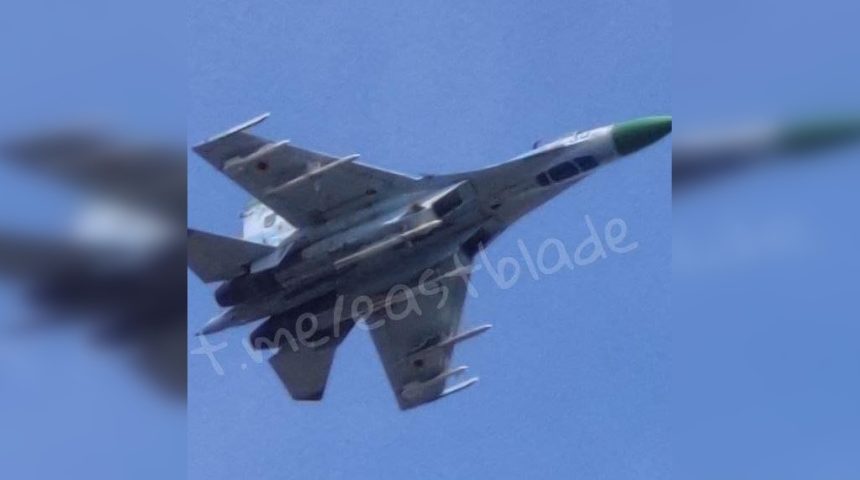After the video of the MiG-29 Fulcrum shooting HARMs, photos now show also the Flankers flying with the American anti-radiation missiles.
Last week we got the visual confirmation of the Ukrainian Air Force MiG-29 Fulcrum fighter jets employing US-made AGM-88 High-speed Anti-Radiation Missiles. Now we have photographic evidence of the missile being employed also by the Ukrainian Sukhoi Su-27 Flanker heavy fighters. The aircraft can be seen carrying also two R-27R/AA-10 Alamo and two R-73/AA-11 Archer air-to-air missiles.
As we have already reported, in early August, photos emerged online showed debris left by an AGM-88 after it struck a Russian Surface to Air Missile site. A couple of weeks later, the US government confirmed that the US-made anti-radiation missiles were delivered to Ukraine and were being employed by the MiG-29s.
#Ukraine: So far, we have only seen AGM-88 HARM in use with Ukrainian MiG-29 jets.
However, evidence has now emerged showing the powerful Su-27S (Notably in an older colour scheme) apparently carrying two HARM missiles; another boost to UkAF SEAD capability. pic.twitter.com/hEmwRO75DG
— 🇺🇦 Ukraine Weapons Tracker (@UAWeapons) September 9, 2022
The officials did not provide details about how the missile was integrated on the Soviet aircraft, and thus it is not 100% sure how they got the missile to work on this platform.
Here’s the comment about the integration we included in our previous story on this topic:
No details have been provided about how the missile was integrated on the MiG-29. As we already mentioned in a previous article, integrating the missile on the MiG-29 doesn’t simply mean strapping a LAU-118A launcher and the AGM-88 missile to the MiG’s pylons, there is a lot more work that needs to be done to integrate them in the avionics and electrical systems. Also, another problem is how the Fulcrum’s pilots will perform the targeting of the missile, which usually happens through a Multi-Function Display that cannot be found in the MiG-29’s fully analogic cockpit.
Some analysts are suggesting a solution which involves a simple tablet linked to the missile to perform the targeting, possibly through the HARM in sensor mode. As the name suggests, the missile’s sensor provides the pilot with a list of emitters that are being detected, from which one is then selected for the missile about to be launched. Another mode could be the Pre-Briefed mode, however it does not seem very practical in a quickly evolving battlefield as the position of the enemy radar is programmed on the ground and cannot be changed anymore by the pilot once the aircraft takes off.
The video released by the Ukrainian Air Force provided some details about the integration which might have less elaborate than expected. The same details should apply also to both the MiG-29 and the Su-27. The AGM-88 appears to have been loaded directly on the APU-470 missile launchers used by both jets to carry R-27/AA-10 Alamo radar-guided air-to-air missiles.
Another interesting detail was found on the MiG-29 display, showing the AGM-88 recognized by the aircraft as an R-27EP. What makes this interesting is that the R-27EP is anti-radiation variant of the air-to-air missile, with a range of up to 70 nm (110 km) and which homes on airborne radars (so it is still an air-to-air missile). This means that the Fulcrum and the Flanker are using their own avionics without modifications to shoot the US-made missile, even if in an air-to-ground role instead of the air-to-air role for which that avionic mode was designed.
This leads us to believe that the integration might have been way simpler than expected, maybe requiring just an interface for the different wirings and the hanging points of the missile. Either way, the Ukrainians found an ingenious way to quickly bolster their Suppression of Enemy Air Defenses capabilities with both their frontline fighters and, even if the integration gives basic capabilities compared to a dedicated asset fully compatible with the HARM, they put the new capability to good use.









